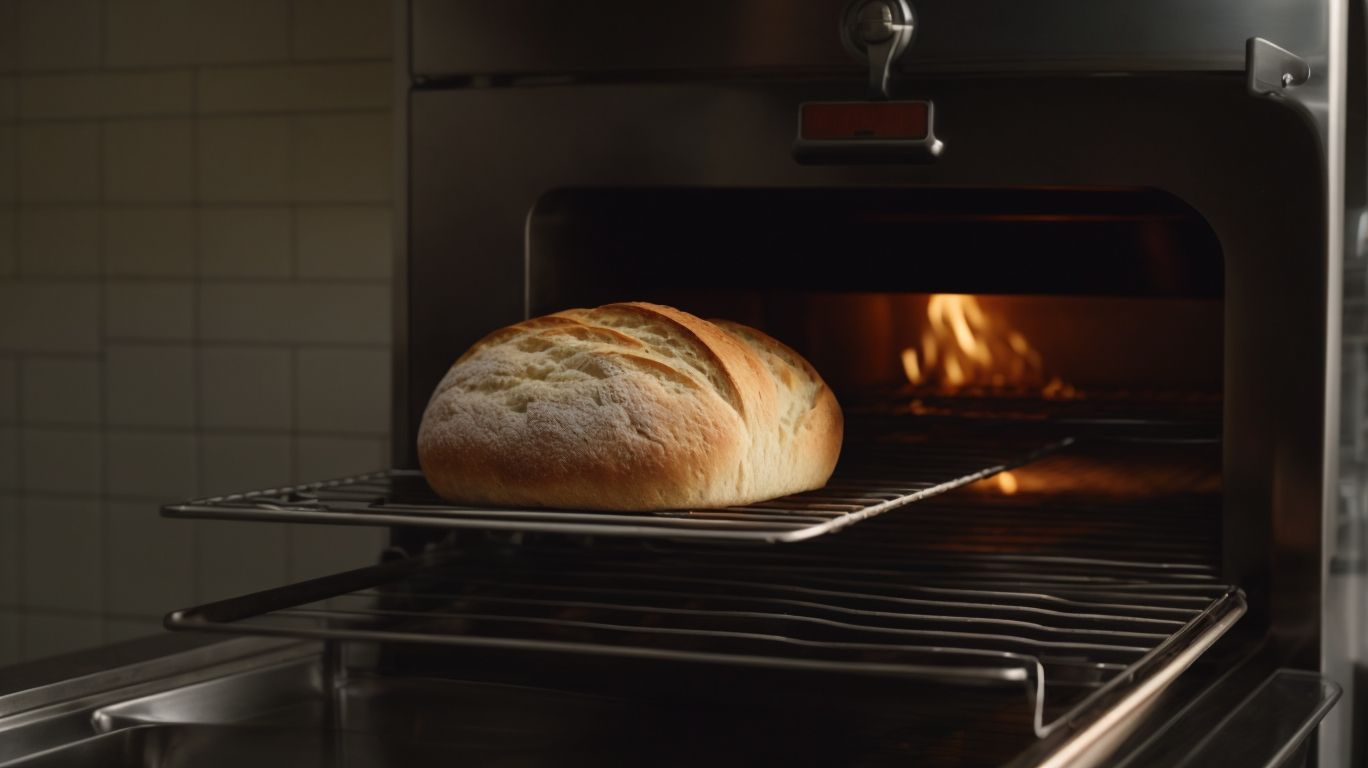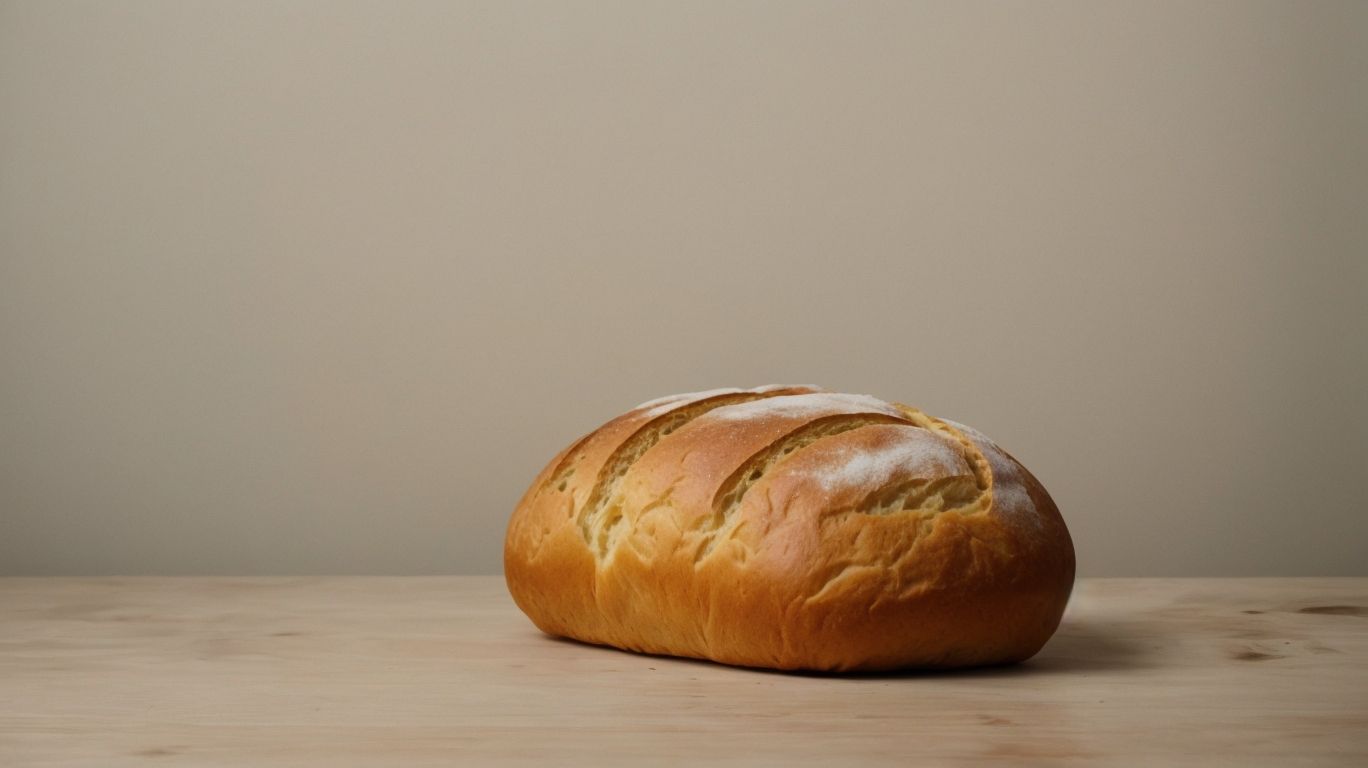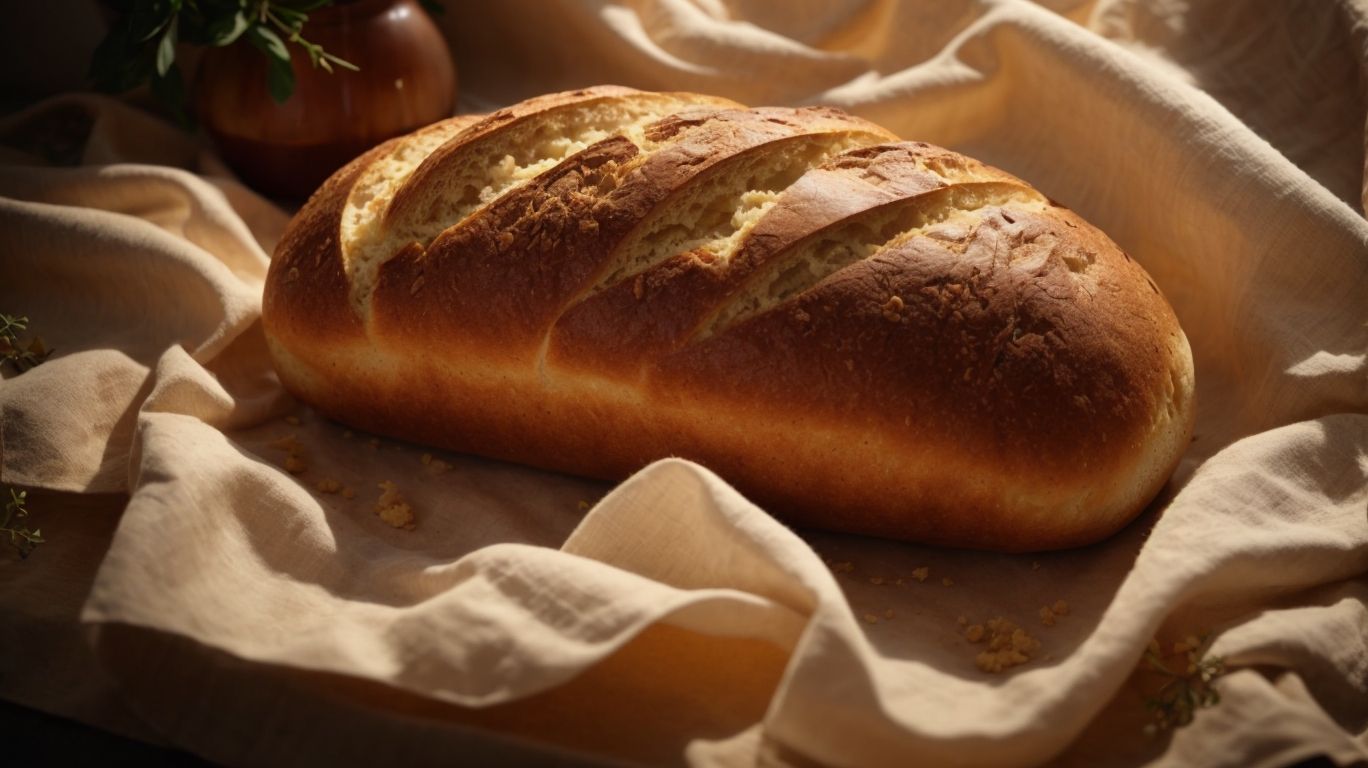How to Bake Undercooked Bread?
Are you tired of dealing with undercooked bread?
We explore the reasons behind undercooked bread and why it is crucial to bake it properly.
Discover the risks of consuming undercooked bread, how to identify if your bread is undercooked, and methods for fixing it.
Get tips on preventing undercooked bread from happening in the first place and stay tuned for expert advice from a seasoned chef!
Key Takeaways:
What Causes Bread to be Undercooked?
Several factors can lead to bread being undercooked, such as insufficient baking time, inaccurate oven temperature, underproofing of the dough, or using the wrong type of flour.
Insufficient baking time is a common issue that results in undercooked bread. When bread doesn’t spend enough time in the oven, the internal temperature may not reach the desired level for proper baking. This can lead to a doughy or raw center. Similarly, inaccurate oven temperature plays a crucial role. Ovens that run too hot or too cold can disrupt the baking process, leading to uneven cooking and undercooked sections.
Underproofing of the dough is another factor to consider. Proper proofing allows the bread to develop its structure and texture. Inadequate proofing time can result in bread that doesn’t have enough time to rise and bake fully, resulting in a dense and undercooked loaf. Using the wrong type of flour can impact the final outcome. Different types of flour have varying protein levels and gluten content, which affect the bread’s texture and baking properties. Using the incorrect flour can lead to a lack of proper structure development during baking, resulting in undercooked bread.
Why is it Important to Bake Bread Properly?
Baking bread properly is crucial to ensure a safe and enjoyable eating experience, as undercooked bread may pose health risks and lack the desired texture and flavor.
Properly baked bread not only guarantees a pleasant dining experience but also plays a vital role in achieving that perfect consistency and taste. When bread is undercooked, it retains excess moisture, resulting in a gummy, doughy texture that can be unappealing to the palate.
Ensuring thorough baking allows the dough to fully rise and develop those coveted air pockets within, creating a light and fluffy interior with a crusty exterior.
From a food safety standpoint, insufficiently baked bread may harbor harmful bacteria, leading to potential digestive issues if consumed.
What are the Risks of Eating Undercooked Bread?
Consuming undercooked bread can lead to potential health risks, including exposure to harmful bacteria, digestive issues, and foodborne illnesses.
When bread is not thoroughly baked, it may contain Salmonella, E. coli, or other bacteria that can cause severe infections when ingested. These pathogens thrive in undercooked dough and can result in symptoms like nausea, vomiting, diarrhea, and abdominal pain. Incomplete baking compromises the structural integrity of the bread, potentially affecting its texture and taste. Ensuring that bread reaches the recommended internal temperature during the baking process is crucial to safeguard against these health hazards and promote safe consumption practices.
How to Tell if Bread is Undercooked?
Identifying whether bread is undercooked involves examining its texture, color, and internal temperature to determine if it has been baked thoroughly.
When checking the color of the bread, undercooked loaves tend to appear paler than fully baked ones, with a slightly raw and dense feeling. You may notice certain parts looking noticeably doughy or wet as well, suggesting that the bread hasn’t fully set.
Another crucial element is the texture – undercooked bread can feel sticky or gummy when touched, lacking the desired springy and fluffy consistency. It might seem excessively moist or crumbly, indicating that the interior hasn’t been adequately cooked.
For a precise assessment, using a thermometer to measure the internal temperature of the bread is highly recommended. The ideal temperature for most bread varieties is around 190-205 degrees Fahrenheit, ensuring a perfectly cooked loaf.
What are the Visual Signs of Undercooked Bread?
Visual indicators of undercooked bread include a pale crust, dense crumb structure, or doughy appearance that lacks proper browning or crispness.
When examining a loaf of bread that is not fully baked, its color may appear lighter than expected, suggesting that the Maillard reaction, responsible for creating that desirable golden-brown hue, hasn’t occurred adequately. The density of the crumb can be another giveaway, as undercooked bread tends to have a heavy and sticky interior, lacking the airy pockets that signify proper baking. The surface texture can feel slightly damp or mushy instead of crusty and firm, indicating that the moisture content within the bread hasn’t evaporated sufficiently during baking.
What are the Texture Indicators of Undercooked Bread?
Texture clues that bread is undercooked include a gummy or moist interior, lack of springiness, or a dough-like consistency when sliced or torn.
When you touch an undercooked bread, it often feels sticky or dense, with a noticeable resistance rather than a light and airy composition. The surface might appear pale and soft compared to the golden and crisp texture of fully baked bread. An undercooked loaf tends to have a doughy feel in your mouth, leaving a lingering starchy sensation. The crumb structure may be compact and too tight, lacking the desirable open and airy pockets that properly baked bread exhibits.
Methods for Fixing Undercooked Bread

Credits: Poormet.Com – Patrick White
There are several ways to salvage undercooked bread, including re-baking it, slicing and toasting the slices, or repurposing it into croutons for added texture and flavor.
If you opt for re-baking the undercooked bread, preheat your oven to 350°F (175°C) and place the bread directly on the oven rack for 5-10 minutes until it is fully cooked through. Slicing and toasting is another effective method. Slice the bread into thin pieces and toast them in a toaster or oven until they are crispy and golden brown. This method can give the bread a new crunchy texture and enhance its overall taste.
Re-baking the Bread
Re-baking undercooked bread involves returning it to the oven at a slightly lower temperature to allow for thorough cooking without burning the crust.
When re-baking undercooked bread, it’s crucial to preheat the oven to around 300°F (150°C), giving the bread ample time to evenly heat through. Placing the bread on a perforated baking sheet allows for proper air circulation, aiding in the drying process while ensuring the bread doesn’t become overly crispy. Keep a close eye on the bread as it reheats, periodically checking for doneness. Once the internal temperature reaches around 200°F (93°C), remove the bread from the oven to cool before slicing and enjoying the perfectly baked outcome.
Slicing and Toasting the Bread
Slicing undercooked bread and toasting the slices can help dry out the interior and improve the texture while adding a crispy exterior.
To slice undercooked bread effectively, it’s important to use a sharp knife to ensure clean cuts without squashing the loaf. Make sure to cut the slices evenly to promote even toasting. Consistency in the thickness of the slices will help achieve a uniform texture after toasting. When toasting, adjust the temperature based on the type of bread; for denser loaves, a slightly lower heat can prevent burning while still achieving that desired crunch. Keep a close eye on the slices, flipping them halfway through to ensure both sides are evenly toasted.
Turning the Bread into Croutons
Repurposing undercooked bread into croutons involves cutting it into cubes, seasoning them, and baking until crispy for a versatile and flavorful addition to salads or soups.
To enhance the flavors of your croutons, you can season them with a mixture of olive oil, salt, pepper, garlic powder, and herbs such as rosemary or thyme.
After cutting your bread into cubes, toss them in this seasoned mixture to ensure an even coating. Once seasoned, spread the cubes evenly on a baking sheet lined with parchment paper to prevent sticking.
Preheat your oven to around 375°F (190°C) and bake the croutons for 15-20 minutes, turning them halfway through to ensure even crispiness.
Preventing Undercooked Bread

Credits: Poormet.Com – Christopher Gonzalez
To avoid undercooked bread, it is essential to use a thermometer for doneness, adjust baking time and temperature as needed, ensure proper proofing of the dough, measure ingredients accurately, and select the right flour type.
Temperature monitoring is crucial during the baking process. Monitor the internal temperature of the bread to ensure it reaches the desired level for safe consumption. Adjusting baking time and temperature based on your oven’s performance and the size of the loaf can make a significant difference in achieving a perfect bake.
Proper proofing is a key step. Allow the dough to rise sufficiently before baking to avoid a dense or undercooked texture. Accurately measuring ingredients, especially yeast and water, is vital for the fermentation process. Choosing the correct flour type for your recipe, whether it’s bread flour, whole wheat flour, or a blend, can impact the texture and structure of the final product.
Using a Thermometer to Check Doneness
Utilizing a thermometer to verify the internal temperature of bread ensures that it is fully cooked and safe to consume without being undercooked.
When testing bread doneness, the thermometer becomes an essential tool, preventing the common pitfall of relying solely on visual cues that may not always be accurate. With different types of bread requiring specific internal temperatures for the perfect result, it’s crucial to understand these benchmarks.
For example, yeast bread like sourdough should reach around 190°F (88°C) internal temperature, whereas quick breads like banana bread are usually done at 200°F (93°C). Bread rolls and buns should register between 180-190°F (82-88°C) to ensure they are fully cooked through.
Adjusting Baking Time and Temperature
Modifying the baking time and temperature based on the specific bread recipe and oven characteristics can help achieve optimal baking results and prevent undercooked loaves.
When adjusting baking time and temperature, it’s crucial to follow the recipe instructions closely. Different types of bread require varying heat levels and durations in the oven. For example, artisanal sourdough may need a longer baking time at a lower temperature to develop its signature crust and flavor. On the other hand, a quick bread like banana bread should be baked at a higher temperature for a shorter time to ensure it stays moist and cooks through without drying out.
Making Sure the Bread is Fully Proofed
Properly proofing the bread dough until it doubles in size ensures that the yeast has adequately fermented, leading to a well-risen loaf when baked.
During the proofing phase, the dough undergoes a crucial transformation where yeast ferments the sugars present, producing carbon dioxide gas that gets trapped within the gluten network. This process is essential to develop the bread’s texture and flavor.
To achieve optimal proofing, maintain a warm and humid environment to support yeast activity. Cover the dough with a damp cloth to prevent drying out. Gently punch down the dough after the first rise to expel excess gas, aiding in a more even rise during the second proofing.
Properly Measuring Ingredients
Accurate measurement of ingredients using a kitchen scale is essential to maintain the right dough consistency and moisture levels, preventing undercooked results.
When making bread, precision is key. Each ingredient plays a crucial role in the final product’s texture and flavor. Too much or too little flour, yeast, or water can lead to a disappointing outcome. By using a kitchen scale, you can ensure that you are adding the exact amount of each component, resulting in a perfectly balanced dough.
Even a small deviation in ingredient quantities can affect the fermentation process, leading to dense or gummy bread. Investing in a high-quality kitchen scale not only enhances your baking skills but also improves the consistency and quality of your homemade bread.
Using the Right Type of Flour
Selecting the appropriate type of flour, such as bread flour for yeast-based recipes, can contribute to proper gluten development and overall structure, reducing the risk of undercooked bread.
When making bread, the type of flour chosen is the cornerstone of success. Bread flour, with its high protein content, is ideal for yeast-based recipes as it provides the necessary strength to trap the gases produced during fermentation, resulting in a well-risen loaf with a chewy texture.
In contrast, using all-purpose flour, which has a lower protein content, may lead to a denser and less airy bread due to insufficient gluten formation. Understanding these distinctions can make a significant difference in the final product—a perfect loaf with the right flour selection or a disappointing outcome with mismatched ingredients.
Frequently Asked Questions
How to Bake Undercooked Bread?
What are the signs of undercooked bread?
Undercooked bread will have a pale or doughy appearance, and may feel heavy or dense when touched.
How do I know when my bread is undercooked?
A simple way to check for undercooked bread is to insert a toothpick or knife into the center of the loaf. If it comes out wet or with dough stuck to it, the bread is not fully cooked.
Can I fix undercooked bread without baking it again?
Yes, you can try toasting the bread in the oven or toaster to help dry it out and give it a slightly crispy texture. However, this may not fully cook the dough and could potentially burn the outside.
Tips for Baking Undercooked Bread
How can I prevent my bread from being undercooked?
Make sure to accurately measure all ingredients, and follow the recommended baking time and temperature. Check the bread towards the end of the baking time to ensure it is cooking evenly.
Can I use a microwave to fix undercooked bread?
While it is possible to use a microwave to heat up undercooked bread, it may result in a tough or rubbery texture. It is best to use an oven or toaster for a more even and desirable result.
Can I freeze undercooked bread and bake it later?
Freezing undercooked bread will not fully cook the dough, so it is not recommended. It is best to bake the bread fully and then freeze it if needed.

